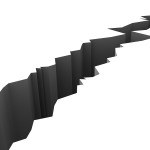There’s a whole lot of shakin’ going on at the University of Nevada, Reno.
UNR’s seismic-simulation facility became the largest in the United States and second largest in the world this week with an expansion that included moving three new 27-ton shake table tops into the school’s new Earthquake Engineering Laboratory.
“This facility is very exciting for us because it enables us to test things we haven’t been able to test before,” said David Sanders, a civil engineering professor at UNR.
The shake table tops, called platens, are very large and strong surfaces onto which structures are attached and then shaken to determine their ability to withstand damage from earthquakes. Scientists use them to conduct simulations for governments and private industry to test new techniques to build safer bridges, highways and housing.
 “It gives us more versatility and more flexibility and allows us to test larger structures and more different configurations of structures,” Sanders told the Reno Gazette-Journal.
“It gives us more versatility and more flexibility and allows us to test larger structures and more different configurations of structures,” Sanders told the Reno Gazette-Journal.
“Now we not only can determine the capacity of different structures (to withstand an earthquake), we also can test the structures so buildings and bridges can stay functional after an earthquake,” he said.
Each one of the three tables can carry 50 tons of weight that can shake a structure forward and back just like a real earthquake, he said.
Envision one of Disney World’s rides in a simulated world where you sit in a seat that whips you around.
“It’s sort of like that, but with 50 tons of weight,” Sanders said.
Massive hydraulic jacks are used to move the tables and are controlled by computers to simulate the earthquakes.
The three-story Earthquake Engineering Laboratory was specifically built to accommodate the shake tables so that they could be lined up in different shapes and contours to represent different structures during seismic events, Sanders said.
UNR’s facility is one of only two facilities in the world that have four large shake tables, he said. The other is in China.
“In terms of facilities around the world and in the United States, this is one of the best facilities for testing and simulating earthquakes,” Sanders said.
The laboratory conducts research and tests new designs and materials, nationally and around the world, for government agencies and private industry seeking to construct safer bridges, buildings and highways.
Ian Buckle, a civil engineering professor and director of the seismic laboratory, said the new Earthquake Engineering Laboratory has more than doubled the space of the laboratory and is about 20 feet taller than the UNR’s existing Large-scale Structures Laboratory.
That will allow larger structures to be tested, which will and provide more reliable results of what the impact of an earthquake would be on a full-scale structure, he said.
“It is an earthquake engineer’s dream.” Buckle said.
Construction on the new laboratory began in November 2010. A formal dedication ceremony is scheduled on June 24 by invitation only.
The structure’s $20 million price tag was paid for by $12.1 million from the U.S. Department of Commerce and $3.1 million from the U.S. Department of Energy. An additional $3.1 million came from donors and other sources.
Topics Catastrophe Natural Disasters USA Education Universities Earthquake
Was this article valuable?
Here are more articles you may enjoy.


 Soft Commercial Market Ahead: Prepare for Underwriter ‘Herd Behavior’
Soft Commercial Market Ahead: Prepare for Underwriter ‘Herd Behavior’  Insurer Not Liable if Bank Improperly Cashes Insurance Check, Appeals Court Finds
Insurer Not Liable if Bank Improperly Cashes Insurance Check, Appeals Court Finds  NC Insurers Warned About Using Flood Denials in Underwriting
NC Insurers Warned About Using Flood Denials in Underwriting  In Florida’s Weed Wars, Griffin and DeSantis Clash With Trump and ‘Pot Daddy’
In Florida’s Weed Wars, Griffin and DeSantis Clash With Trump and ‘Pot Daddy’ 

